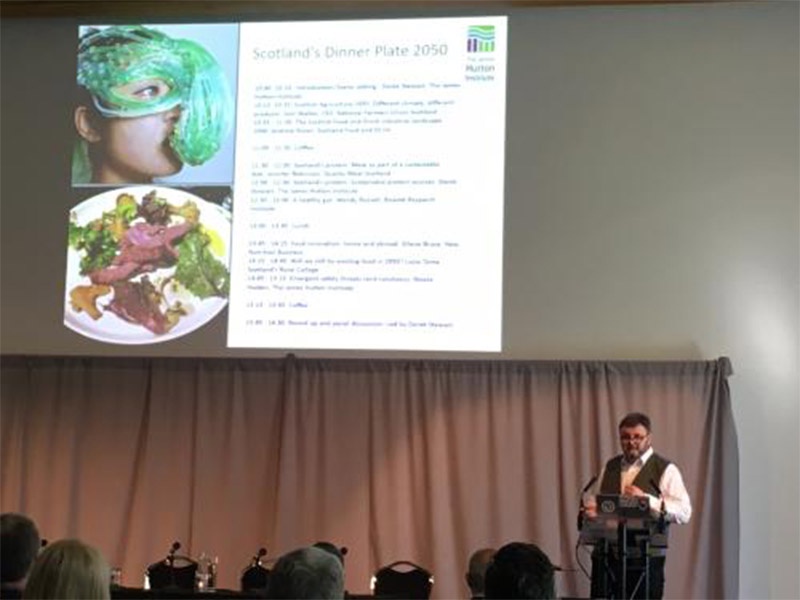
Food and drink production is very important to the economics and well- being of Scotland. However, despite promoting itself as a land of quality food and drink, Scotland has a very high incidence of non-communicable diseases such as cardiovascular disease and type 2 diabetes.
A long-term vision for innovations that could affect the health of Scotland were discussed at an event to imagine what our dinner plate may look like in 2050. Presentations from external partners such as the National Farmers Union Scotland, Scotland Food and Drink and Quality Meat Scotland discussed the value of Scottish food produce and future challenges.
Further discussion of the health of the nation extended to what a healthy balanced diet should look like, as well as how portion sizes have changed over the last 80 years. Diets that are sustainable will also be important for a 2050 dinner plate. Research from the Rowett has demonstrated that crops such as Buckwheat and fava beans could help meet future protein requirements .
Food waste and food safety were other key issues that were discussed, highlighting the opportunities to reduce waste at the producer and consumer level as well as emerging technologies to monitor food contamination.
Presentations from both industrial and academic partners showed that the food and drink sector is in good shape, but that there are challenges for the future. Climate change is the biggest challenge, particularly for crop agriculture, but could create opportunities for novel crop growth. This workshop demonstrated the impact of the working relationship between the SRP and multiple stakeholders.
Would you like to read more? Our full case study was originally posted here
This work was conducted by Professor Derek Stewart, Professor Wendy Russell , Dr Nicola Holden and Dr Luiza Toma
The workshop was funded by a SEFARI Responsive Opportunity Fund
